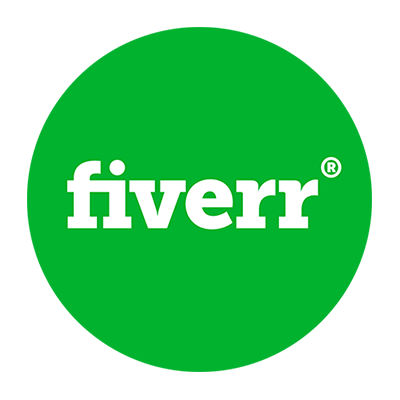
How I Started A $300K/Month Premium Office Furniture Business
Hello! Who are you and what business did you start?
Hi, my name is Greg Hayes. I’m the CEO and co-founder of Branch Office Furniture, but you can just call us “Branch.” We’re taking a new approach to the office furniture industry, selling our line of desks, chairs, and other essentials directly to businesses and saving them thousands of dollars along the way.
In order to understand what is different about Branch, you first need to understand just how painful it has been for companies to purchase office furniture until now. Historically, businesses have had two imperfect options: either pay huge amounts of money for high-end, customized office furniture which is purchased through furniture dealers, or purchase cheaply made office furniture from the likes of Ikea, Amazon or Office Depot for a fraction of the price, but with no service (try getting Ikea to negotiate with your landlord about freight elevator access) and the expectation that the furniture would last for only a couple of years. Neither option offered customers much flexibility or support after the transaction; you buy it, it’s yours.
With Branch, we’ve brought together the best of both worlds. We saw an opportunity to produce high-end office furniture and sell it directly to our clients, applying D2C principles to an antiquated B2B industry littered with middlemen. The result is a series of desks, ergonomic chairs, storage products, and conference furniture sold at between one-third and one-half of the price of comparable quality products, with space design, delivery and installation included. We also offer a trade-in program, so you can add and exchange furniture as your team grows and needs change. Since launching our first products in Q1 of 2019, we’ve done over $1M in sales, including nearly $400k last month!

What's your backstory and how did you come up with the idea?
My co-founders and I have no background in office furniture. This shouldn’t come as a huge surprise: it’s common that great solutions come from people with no preconceptions about how to solve a problem in the first place. What we do have is plenty of personal experience with the problem itself.
In my case, I spent the first five years of my career in institutional commercial real estate. I loved my job and the team I worked with, and I truly thought I would spend my entire career working for the same fund. But as luck would have it, life came knocking: my girlfriend (now wife) Taylre moved to New York City for work, and it wasn’t long before I followed suit. The change of scenery prompted me to think about a change of career for the first time. It wasn’t long before I was interviewing with startups and companies in the proptech world, eventually landing at a fast-growing company called Breather that built and operated flexible office space for growing companies. It was at Breather that the pains of procuring office furniture presented themselves to me for the first time.
Breather was growing at an incredible pace; they had identified needs in two large markets within the world of commercial real estate (short-term meeting spaces and flexible office spaces), and both investors and customers were throwing money at them, fueling breakneck growth. In the two years, I spent at Breather their portfolio of spaces grew from less than 150 to over 500 units. As you can imagine, that meant Breather was buying a lot of office furniture, and they were being plagued by a problem that had faced enumerable companies before them: they wanted beautiful, high-quality furniture for the spaces, but the cost of buying it was beyond justification.
To make matters worse, the pace at which Breather was growing meant that the traditional (and slow) furniture dealers couldn’t get the product into the spaces as fast as they were opening. Breather’s other option, buying from Ikea and the like, was going to leave them with a portfolio of spaces with failing furniture. In the end, they had no choice but to find a factory to produce furniture for them directly.
You need great cofounders. I can’t even imagine having tried to build this business on my own. Find people with complementary skills.
There was no lightbulb moment for me. I had been shocked at how expensive office furniture was when I worked at the real estate fund. I had been frustrated by its inefficient nature when I was at Breather. But along the way, I always thought “there must be someone fixing this.” Then, in December of 2017, after six years of sitting on the sidelines, I realized that I might be the only one thinking about the problem. I spent nine months researching the industry, underwriting a business model, and mentally preparing myself for a leap into entrepreneurship before breaking the news to Taylre that I had to take the plunge.
Taylre and I were in Stockholm, Sweden on our summer vacation when we had the conversation, and luckily for me, she was nothing but supportive. Despite the fact that we were now engaged and less than a year out from our wedding, she encouraged me to quit my job and give it a shot. We both knew that it was a risk and that the timing couldn’t be worse, but we agreed that the bigger risk was passing on an opportunity that might not present itself again. A week later I put in my notice at Breather, two weeks later I met my cofounder Sib, and by October we had a third co-founder (Verity) onboard and were officially working full time on the business.
Take us through the process of designing, prototyping, and manufacturing your first product.
Getting the first prototypes of our furniture manufactured was an intense process. We initially planned to manufacture everything in the United States, but this proved difficult for two reasons. First, the US furniture manufacturing industry has been decimated over the past thirty years, so there were very few factories for us to work with. Second, the cost to produce a run as small as our first one in the US was prohibitively expensive.
With that in mind, I started scouring the globe for the best factories, looking in Canada, Mexico, Poland, China, Malaysia, Vietnam, and India. Ultimately, China proved to be our best bet: it had by far the best supply chain, and its pricing was highly competitive, despite newly-enacted tariffs. I also found out that many of our high-end competitors were producing their furniture there, which made me feel a lot better about offshoring.
In October of 2018, I flew to China, hired a translator, and started visiting factories. Despite many disappointing meetings and plenty of dead ends, I was able to find two factories that agreed to take a risk and produce some prototypes and a small test run for us. Even better, both factories appeared to be producing very high-quality furniture.
For the first run, we worked with the in-house design teams at our factories. My co-founder Verity has a strong eye for design, so despite a lack of technical know-how, we ended up with an initial product line of ergonomic chairs, desks, and filing cabinets that we were proud to take to market.
Our first ever ergonomic chair prototype on the factory floor:

Describe the process of launching the business.
Between early October 2018 and late February 2019, we got to work on launching what was then called Bureau Office Furniture. Securing our prototypes made us feel like we had a real business for the first time, but the road from prototype to active business was going to be a long and expensive one. Furniture takes months to produce and ship, and our factories required minimum orders that closed in on six digits.
The first order of business was to raise capital. Over the course of two months, we raised $200k from family, friends, and several angel investors who saw potential in what we were building. It was just enough money to produce our first production run, but we also needed to fly in our prototypes, set up a small Manhattan showroom, hold a photo shoot, and build a website...and we had no experience doing any of those things.

In retrospect, this stage was the most stressful part of launching the startup. We were now stewards of money from people we cared about, and most of it was being wired to factories in China. We’d heard all of the nightmare stories of dealing with Chinese manufacturers: quality slippage, inventory not matching prototype designs, factories “closing” after the payment is sent, and so on. Now we had to wait three months for our furniture to be produced and shipped before we would have any idea if it was of the quality we had signed up for. To make matters worse, I was up all night dealing with our factories as we worked through growing pains. There was no shortage of moments that left me wishing I was back in my old career with a steady paycheck.
By January we realized that we were totally unprepared for the process of importing our furniture. Assuming we could figure out how to get it into the country, we’d also need a warehouse, and then we’d have to figure out how to ship our product domestically since we were promising two-week delivery and white-glove assembly, which was to be an industry first. Of course, none of that would matter if we didn’t have any sales, which at that point was nothing more than a dream.
In the end, the launch was a huge success. We sold through all of our initial inventory run within six weeks, mostly on the back of word-of-mouth within New York’s commercial real estate industry. We spent March, April, and May delivering to our first customers and preparing for our next run of inventory to arrive. The operational side of the business was an enormous challenge, but we worked day and night to get it right. By July we’d closed a $2.1 million seed round with some of the best investors in the proptech venture world. By November we had rebranded to “Branch,” launched a new website and hired a team of ten spread across New York City, North Carolina and China.
Be ready to work your ass off. The most successful business people I know are not the smartest people I know, they’re the hardest working, and they don’t give up when things get tough.
The biggest lesson I learned through the process is that, although starting a business is really hard, you can literally will it into existence. There’s no reason Sib, Verity and I should have a growing furniture business. A year ago we knew almost nothing about furniture, manufacturing, international trade, domestic delivery, warehousing, or raising money. But we supported each other, took a “never say die” attitude, and worked our asses off, and as a result, probably have the fastest growing furniture company in the country.

Since launch, what has worked to attract and retain customers?
Our target customer is a growing business between 25 and 300 people, which we segment further by size, growth trajectory and budget. Each segment has a decision marker; typically a CEO or COO at smaller companies, or a facilities and operations leader at larger companies. Depending on what products they buy, our clients spend anywhere from a few hundred dollars to a thousand dollars per employee with us, so we’re talking about an average order value in the tens of thousands. We spend a lot of time thinking about our decision-makers and what makes them tick.
Given the size of our ticket and the importance of this purchase, and given the fact that we’re relatively new on the block, our acquisition funnel is geared to generate leads for our sales team to educate and convert. This isn’t a typical eCommerce flow, although as we build our track record, we expect to see more “direct” transactions from customers buying a few chairs or desks who feel comfortable checking out right on Shopify. But because of the complex, service-intensive and expensive nature of this transaction, most of our customers will want to talk to us before they pull the trigger.
Broadly speaking, we generate leads in three ways. Online acquisition is important to us, and for reasons I’ll explain below, driving organic traffic and SEO is a big priority, with key levers being content marketing and PR. We measure our progress on that front with Moz’s Domain Authority metric and we also track our results page ranking for relevant keywords. A quick aside on PR: beyond its impact on SEO, PR is huge as a direct tool for establishing credibility. A single article published right after our launch helped us source one of our first and largest customers, who found us because they were so frustrated with the process that they googled “office furniture startup” and found this article about us (our own domain authority at the time wouldn’t have ranked us for that query).

Beyond the top of the online funnel, we totally revamped our website and relaunched in November; the new site converts more than twice as well as our old site, which we attribute to a redesigned lead gen flow as well as better photography, social proof and more professional design.

We get asked about Amazon sometimes; we haven’t launched there yet. Our product is as much a service as it is our physical furniture, so we want to control the fulfillment experience end-to-end. But Amazon is a powerful tool from a demand generation perspective; we may test certain products there that are a better fit for individual buyers, like our standing desks.
Outside of our digital channels, we have a direct sales channel, where we reach out to companies that might need our product soon. We also work with partners in the real estate community. Once a lead is captured through any of our channels, our sales team takes over to close the deal; our sales cycle varies by deal size, but it can take weeks to months to close some of our largest deals.
In general, the biggest lesson we have here is prioritizing channels based on how their intent aligns with your product. Commercial office furniture is a high intent transaction; even if we targeted them with the best Instagram ad in the world, most of our decision-makers won’t buy our product unless they have pre-existing intent to do so. This means search traffic, both organic and paid, is especially valuable to us because intent is captured in the query. Or with sales and partnerships, if we can identify predictors of intent--recently raising funding, headcount growth on LinkedIn, working with a broker or landlord--you can dramatically improve your conversion.
How are you doing today and what does the future look like?
In our first ten months in business, we did $1m in revenue, furnished offices for over a thousand employees across eleven cities, expanded our line of furniture to include collaboration and lounge staples, and did it all with an industry-leading NPS of 60+. In 2020, we’re going to do it all again but much, much bigger. We have ambitious top-line goals; a little scary, but that means we’re doing it right!
To make it happen, we have a few priorities. On driving top-line demand, we’re going to keep investing in channels that work and expand our addressable market by opening new geographies; Toronto and Canada, here we come in Q1!
We’ll also grow our product line, with reception and lounge furniture on the way early in the year. Our goal is becoming a true one-stop-shop for all office furniture needs by the middle of the year, while maintaining our lean and curated ethos.
Beyond our physical products, we’ll also begin to launch digital products to make the process of managing and updating your furniture and floor plan even easier for our clients. Our north star is creating a flexible, inspiring furniture experience that adapts to your needs and maximizes physical productivity for your team; for technical folks, imagine the “API for office furniture,” where your space actively configures itself to changing headcount and employee preferences.
Our ultimate linchpin is operations. Most of our larger deliveries require some degree of project management, from coordinating with a landlord about insurance requirements to making sure newly-poured concrete floors are dry; we can’t simply drop ship or plug into existing logistics rails like FBA. The fact that we handle everything is part of why our customers love us, and we have great partners on last-mile logistics, but building an efficient and scalable fulfillment process will be key to hitting our goals in 2020.
Through starting the business, have you learned anything particularly helpful or advantageous?
My number one piece of advice for aspiring entrepreneurs is always to go in eyes wide open. The stories are all true: starting a business is really hard. I thought that I had it all figured out going in, but the truth is that starting a business is a learning experience. A year on, I’m still learning everyday. But don’t let that dissuade you: despite the struggles, it’s also the most rewarding thing I’ve ever experienced.
A few other important pieces of advice:
Be ready to do anything and everything to make it work. No task is below you. My co-founders and I have assembled more desks and chairs than you could imagine, spent evenings and weekends in warehouses and freight elevators, and have been on the verge of renting a truck and driving furniture across the country to make a client happy. Had we not done (or been prepared to do) these things, there would be no Branch.
It’s more expensive to build your business than your model is telling you. Looking back at our initial underwriting for this business, we thought it would be about half as expensive to set up as it has proven to be. Legal fees, freelancers, salaries, office space, and mistakes add up. If you’re building a big business, they are virtually unavoidable.
If you’re interested in raising capital for your company, be aware that getting cash in the bank is not a fast process, even with a compelling pitch and receptive investors. We raised nearly $2.5M, but most of that came after we’d proven to investors that we could run a successful operation. Even then, it took months to go from meeting our investors to tying off loose ends with lawyers and receiving our investment.
You need great cofounders. I can’t even imagine having tried to build this business on my own. Find people with complementary skills who share your passion and work ethic, and get to work with them.

What platform/tools do you use for your business?
Our website is built on Shopify; we looked at Webflow Ecommerce and a few other solutions, but ultimately loved the tried-and-tested inventory management and robust stack of apps and plugins on the platform. We worked with an agency to build a custom theme that is well suited to our unique needs, notably the fact that we’re more focused on lead gen as a conversion goal than your typical eCommerce business.
Within the Shopify ecosystem, we’re huge fans of Shogun as an easy tool to build landing pages without having to code in liquid. We love Klaviyo for email marketing and will be stepping up our efforts there in 2020.
Outside the Shopify ecosystem, we’ve been using Notion, Zapier and Bubble to prototype internal and client-facing tools. As a team currently operating without a full-stack engineer (hiring now!), it’s been amazing to see how much we can build and test without code.
In terms of measurement and miscellaneous: Google Analytics is our go-to for tracking and measurement, though we’re keen to explore FullStory and/or Heap in the new year to get a more granular view of how users behave on our site. We like building custom dashboards in Google Data Studio, the best (free) data viz tool you’ve never heard of. We are huge fans of Fiverr for helping us handle quick tasks like formatting a sales deck, making a quick Shopify fix or designing a landing page!
What have been the most influential books, podcasts, or other resources?
My co-founders and I all devotees of classic startup content like How I Built This, Paul Graham’s blog posts and Zero to One; some of the less trodden blogs / authors / entrepreneurs we follow for advice and inspiration include Julian Shapiro and Andrew Chen (all about growth), Super Organizers (all about productivity), First Round Review (great advice on company building from founders). Who is a big favorite of ours on hiring right. We love the classic Amazon and Berkshire Hathaway annual letters that provide a consistent sense of what building a great business really means.
Advice for other entrepreneurs who want to get started or are just starting out?
The best advice I can give is pretty simple: be ready to work your ass off. This is the secret sauce. The most successful business people I know are not the smartest people I know. They’re the hardest working, and they don’t give up when things get tough. If you can combine that attitude with a passion for whatever you’re building (the Angela Duckworth “Grit” formula), your chances of success should be pretty good.
Combine that work ethic with a great co-founder or co-founders, and you’ll be off to the races. I was lucky to meet two incredibly smart, talented, hard-working people without whom I’d be flailing. They bring skill sets that I don’t possess and keep me in line when I’m about to make a bad decision. Knowing what I know now, I would never start a business without a great partner or partners.
Are you looking to hire for certain positions right now?
We’re actively hiring salespeople in New York City, who will handle a national portfolio of clients and help ramp our revenue into eight digits, and will soon be hiring two General Managers. The GMs will be based in San Francisco and Toronto, where they will lead our physical expansion into the West Coast and country launch in Canada.
We’re also always opportunistically hiring great people; we know that our company will live and die by our first twenty hires, so we’re always ready to find a spot for an incredible teammate.
Where can we go to learn more?
Visit the Branch website to check out our furniture line and learn more about the business. We write about office management, office design, and productivity on Turn Key, our company blog; our recent fundraise announcement is a great intro to our brand and company. If you’re in NYC, book an appointment stop by our showroom in NoMad. Our Twitter is here and our Instagram here.
Lastly, if I can help with any office furnishing questions (whether or not you’re in the market for our products), offer advice on building a logistics-intensive but seriously fun startup, or if you love what we’re doing and want to help, don’t hesitate to drop me a line: Email.
If you have any questions or comments, drop a comment below!

Download the report and join our email newsletter packed with business ideas and money-making opportunities, backed by real-life case studies.

Download the report and join our email newsletter packed with business ideas and money-making opportunities, backed by real-life case studies.

Download the report and join our email newsletter packed with business ideas and money-making opportunities, backed by real-life case studies.

Download the report and join our email newsletter packed with business ideas and money-making opportunities, backed by real-life case studies.

Download the report and join our email newsletter packed with business ideas and money-making opportunities, backed by real-life case studies.

Download the report and join our email newsletter packed with business ideas and money-making opportunities, backed by real-life case studies.

Download the report and join our email newsletter packed with business ideas and money-making opportunities, backed by real-life case studies.

Download the report and join our email newsletter packed with business ideas and money-making opportunities, backed by real-life case studies.




















